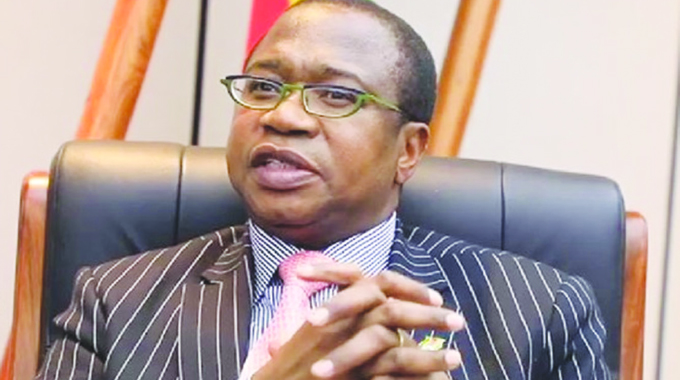Forex auction props up industry revival

Michael Tome Business Reporter
The foreign exchange auctions have disbursed over US$3,2 billion to productive sectors since they opened in 2020, a development that resulted in the growth of local industry’s capacity utilisation to 56,62 percent in 2021.
Addressing participants at the currency indaba of the Political Actors Dialogue (POLAD) yesterday, Finance and Economic Development Minister Mthuli Ncube, said the disbursements had managed to prop up industry performance and the authorities were now in the process of fine-tuning the platform so that it becomes an efficient platform for exchange-rate price discovery.
The funding has mainly gone towards the import of key raw materials, products, and equipment required to keep the economy functioning properly.
The disbursements have helped local industry capacity utilisation to increase from 47 percent in 2020 to 56,62 percent last year, an intervention that has improved the range of locally made goods on supermarket shelves while cutting the country’s import bills.
Despite disbursement bottlenecks that have in some instances been associated with the foreign currency auction system, it had led to a notable impact on the economy.
Of the total allotted, 64 percent was for payment of raw materials, machinery and equipment, with the remaining 36 percent of the total allotments going towards payment for retail and distribution, consumables, services, pharmaceuticals and chemicals, packaging and fuel, electricity and gas.
The Government through the Reserve Bank introduced the auctions in June 2020 as part of measures to stabilise the exchange rates and improve businesses’ access to forex.
This means Zimbabwe has from that period saved millions of US dollars through increased domestic production, helping to preserve and grow local employment instead of exporting jobs by buying from other countries.
Prof Ncube said the allotments to industry had been going well but the issue remained with exchange rate price discovery.
“The auction has worked. It has handed over US$3,2 billion to the manufacturing sector. This is why you see that capacity utilisation levels have increased substantially. It is because the auction has given much-needed foreign currency to importers. The issue has just been the price discovery aspect but not in the allocation aspect.
“On price discovery, we will be fine-tuning it. That is why we are introducing the willing-buyer willing-seller process to improve on the price discovery, “said Minister Ncube.
Speaking about the prevailing currency volatility Minister Ncube bemoaned the arbitrage cancer exhibiting itself in the economy, citing retailers as the other major driver of the runaway prices in the economy leading to high inflation.
“Exchange rate has been the biggest driver of inflation and the gap between official rate (the now converged interbank and auction rates) and the parallel rate is the driver of this inflation.
“This has also been driven by the behaviour of retailers and other speculators. There is enough arbitrage opportunity that people want to take advantage of and they have been doing that. This is what has been driving the parallel market rate.
“What we are noticing as the Government is that the parallel market is not just a spot rate but it is also a rate where economic agents are pricing food thinking about replacement costs, thinking about replacement exchange rates going forward.
“So it’s kind of a forward rate which partly explains the gap between the interbank rate and the parallel market rate,” said Minister Ncube.
To address concerns about money supply growth, Minister Ncube said, the Government had put measures in place which included staggering payments to contractors of major infrastructure projects now underway.
Some of these contractors were alleged to be seeking to hedge their proceeds through buying foreign exchange from the parallel market which is pushing rates.
The suspension of lending earlier last month, and then control over what lending was for, was also a measure to nip speculative lending which was feeding into skyrocketing black-market rates.
“The other thing we are managing is having those who are doing road and dam construction get paid in domestic currency and not rush to the parallel market. So we are spreading out payments to contractors to minimise the impact of their liquidity on the exchange rate. We have decided to split so that 50 percent is paid in domestic currency and the remaining in hard currency and we expect that it will go a long way on the currency
“We took some action a few weeks ago and suspended lending, because we noticed that there was a bit of speculative lending within the banking sector, with corporates basically directing this liquidity not towards real sectors but towards the parallel market and also some of the liquidity finding its way into the equity market creating a price bubble. Hence our decision to take a pause which was a macro-prudential regulation so that monetary policy becomes effective,” he added.
Weighing in Reserve Bank Governor, Dr John Mangudya lamented the growing arbitrage culture in the economy, citing that it was damaging and highlighting that some of the benefactors of the auction system were at the forefront of inspiring skyrocketing parallel-market rates.
“We need to change our arbitrage business models. We don’t want to be blaming people, but we are blaming the humanity in people.
“It is very unfair that a business person to whom we have sold foreign currency at a willing-buyer willing-seller rate today thinks is clever go and sell the money at a higher rate. Is that fair? Because I would have sold my money to you today at $340 but you go and sell the money at $500. So the issue we are seeing is about behaviour,” lamented Dr Mangudya.








Comments